This Turkish eggs recipe, also known as "cilbir", is a delicious breakfast or brunch dish that can be prepared in under 30 minutes. Like this vegetarian shakshuka, cilbir is gluten-free and is inspired by the vibrant flavors of the Middle East.
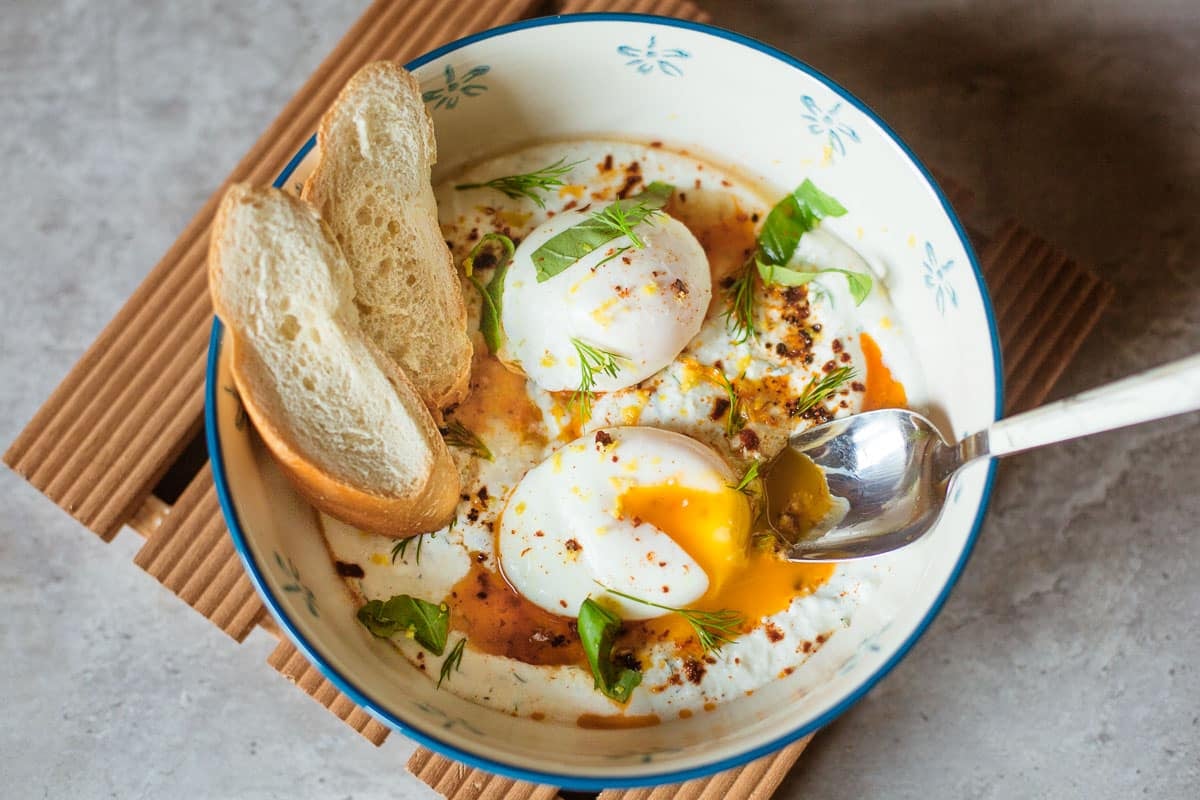
This delicious Turkish egg recipe makes an excellent high-protein breakfast! Also known as cilbir (pronounced "chul-ber"), this dish traditionally consists of poached eggs atop a bed of garlicky Greek yogurt with a spicy infused butter drizzled in. You can serve it with khubz for dipping or as is.
If you've never poached an egg, now's the time to learn! It's much easier than it sounds. It's the key to making cilbir!
Jump to:
😍 Why You'll Love This Recipe
- Cilbir is a restaurant-quality dish you can make at home in under 30 minutes!
- This Turkish egg recipe is high-protein and gluten-free (minus the baguette).
- Cilbir is an elevated and exotic dish you can enjoy on a budget!
🔖 Ingredients & Substitutions
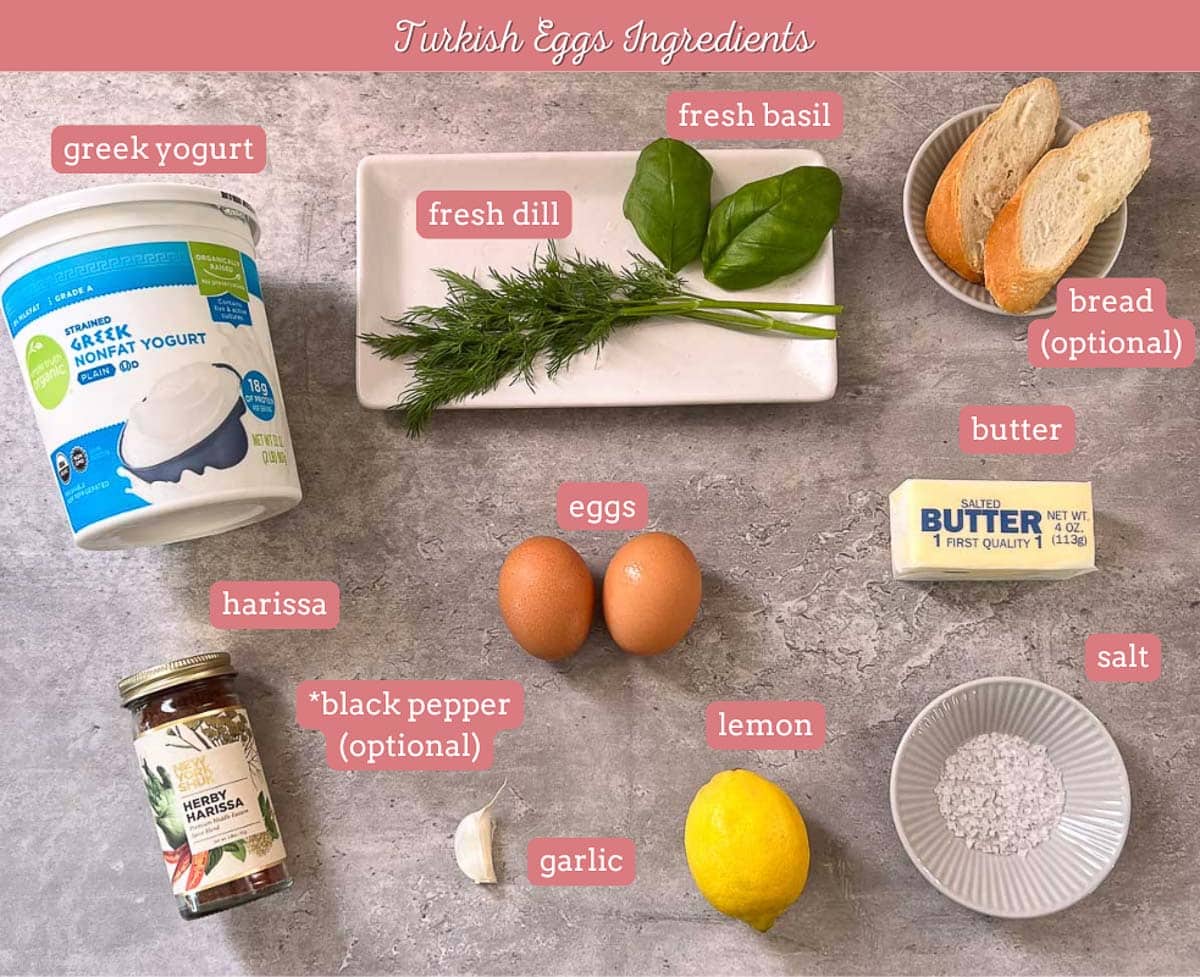
- Garlic: Fresh is best, but garlic powder will also work.
- Salt: Sea salt or kosher salt.
- Butter: Salted or unsalted are both fine, or you can use olive oil.
- Harissa: Aleppo pepper is more traditional, but I prefer harissa. You can also use paprika, red pepper flakes, or make this harissa substitute.
- Fresh herbs: Fresh dill is a must, but I also like to add fresh basil. Mint leaves and parsley are also great options.
- Fresh lemon: You can substitute citric acid or a little white wine vinegar.
- Bread: I like to scoop up the eggs in my cilbir with sliced baguette or French bread, but homemade pita bread or this lavash bread recipe are more traditional options. For a gluten-free option, you can use cucumber slices or try making this gluten-free baguette recipe.
*See recipe card for a full list of Turkish eggs (cilbir) ingredients.
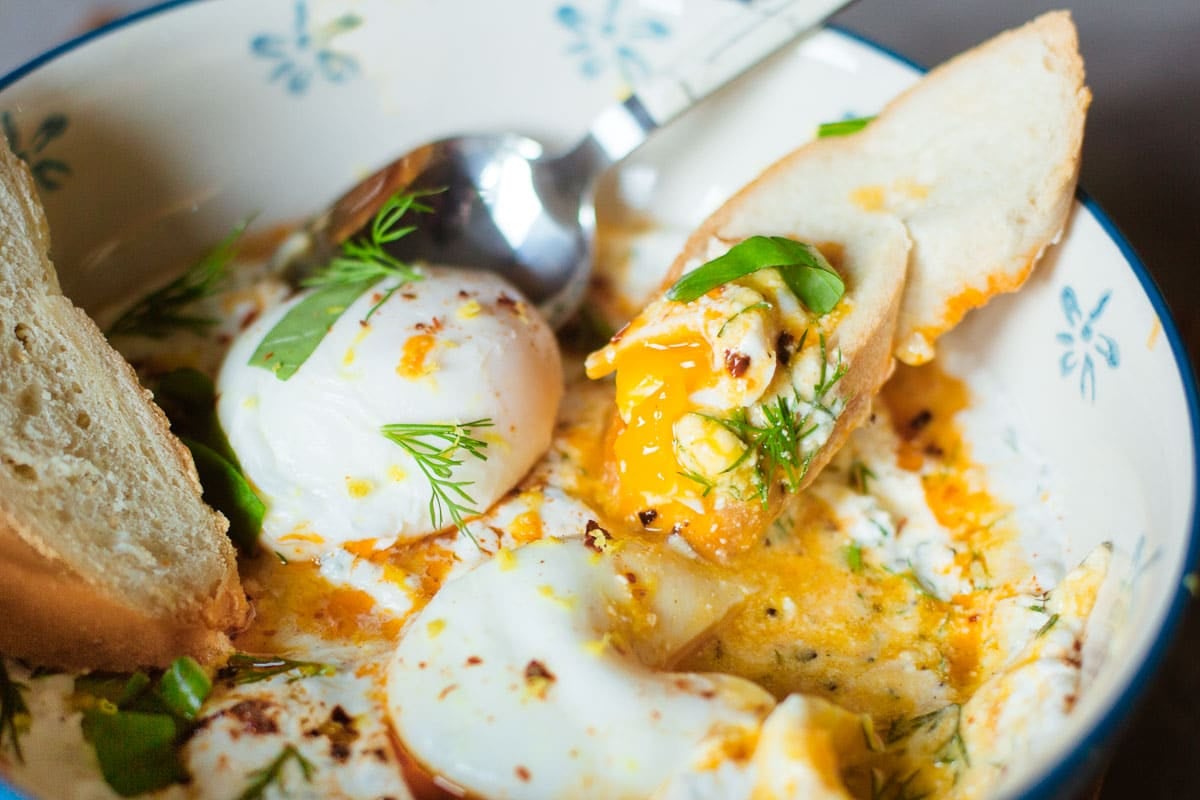
🥚 Tips For The Perfect Poached Egg
- You may have heard that for poaching eggs you need to add 1 Tablespoon of vinegar or lemon juice per 4 cups of water to help the egg coagulate faster and prevent it from breaking up in the water. In my experience, this step is unnecessary if you're careful and if you strain out the excess egg white.
- When you crack open an egg, you'll find 2 distinct parts to the egg white: the inner albumen, which is thick and gelatinous, and the outer albumen, which is thin and has more of a liquid-like consistency. Straining out the outer albumen will prevent flyaways, resulting in a more neatly formed poached egg.
- Swirling the water before adding the egg will prevent it from sticking to the bottom of the pot. You don't need a full-on whirlpool; a gentle stir will do.
- A properly poached egg should have a runny yolk (it's okay if it's a little jammy) surrounded by a fully set egg white. The center of the egg should be firm yet springy when gently prodded.
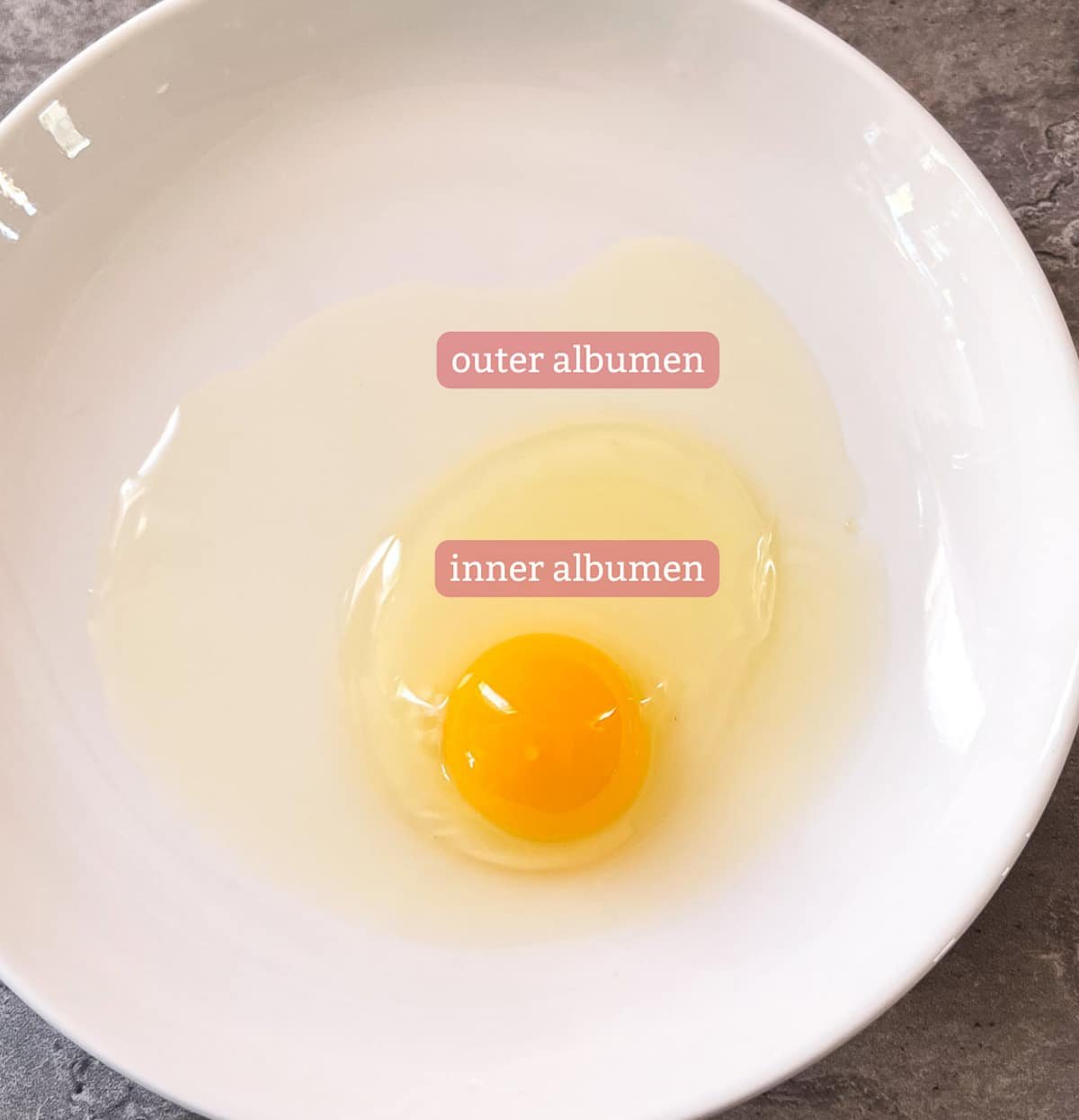
🍳 How To Make This Turkish Eggs Recipe
Start by bringing two small pots of water to a boil, one for the eggs, and the other for the yogurt.
Step 1: In a medium-sized bowl, combine Greek yogurt, sea salt, black pepper, and freshly minced garlic. Place over one of the pots of water, bringing it down to very low heat. As the yogurt begins to soften, stir occasionally until consistent. Once yogurt is warm, stir in freshly chopped dill and remove from heat.
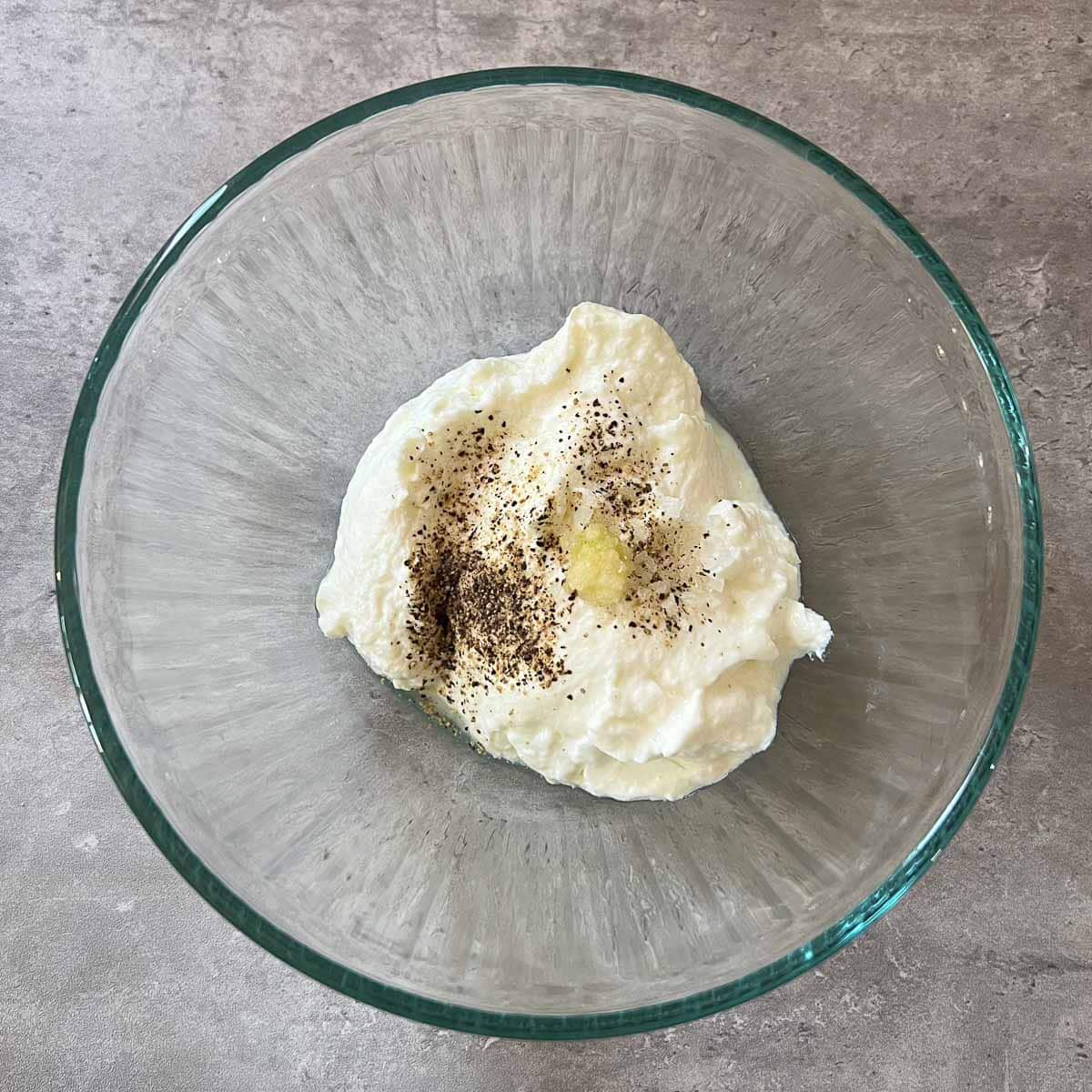
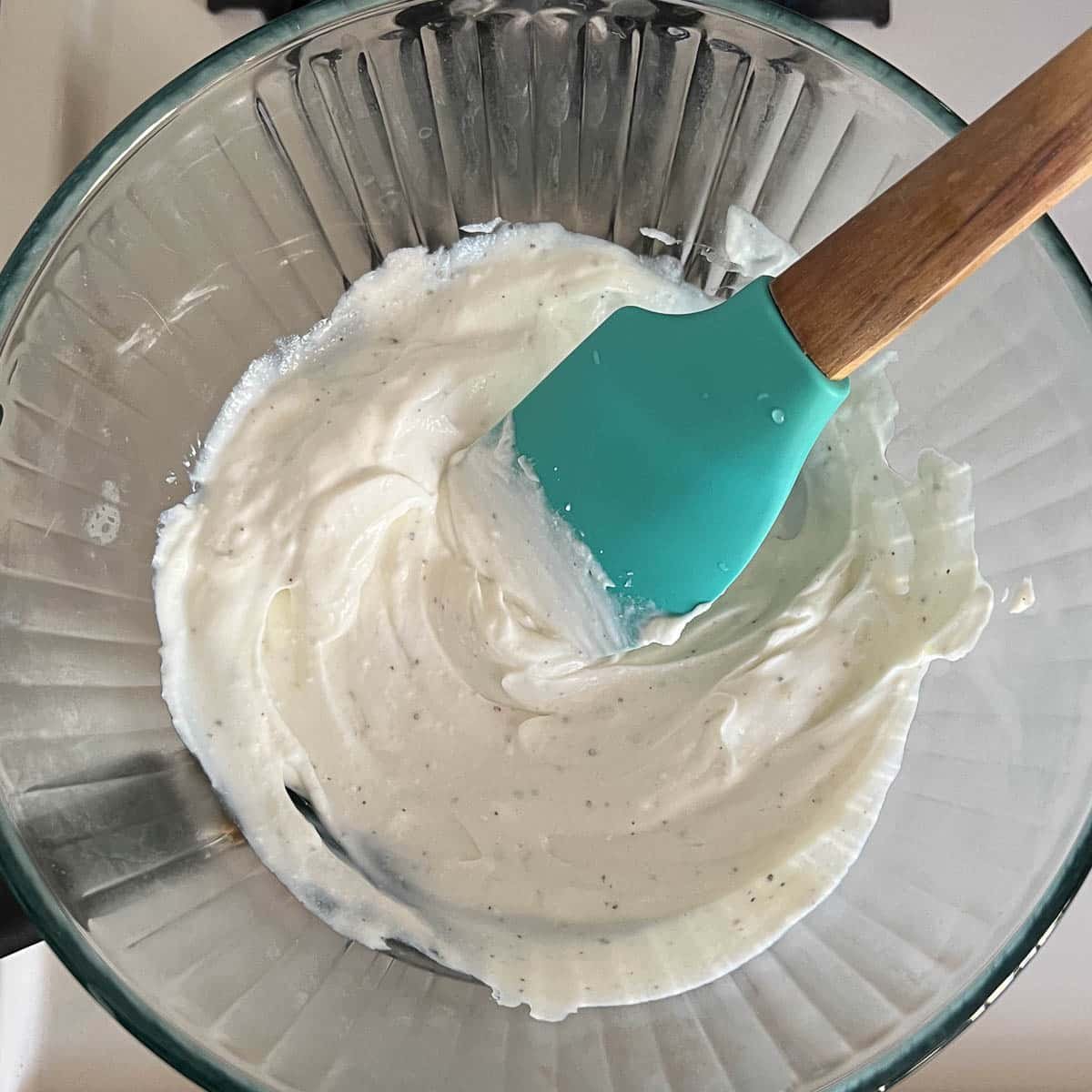
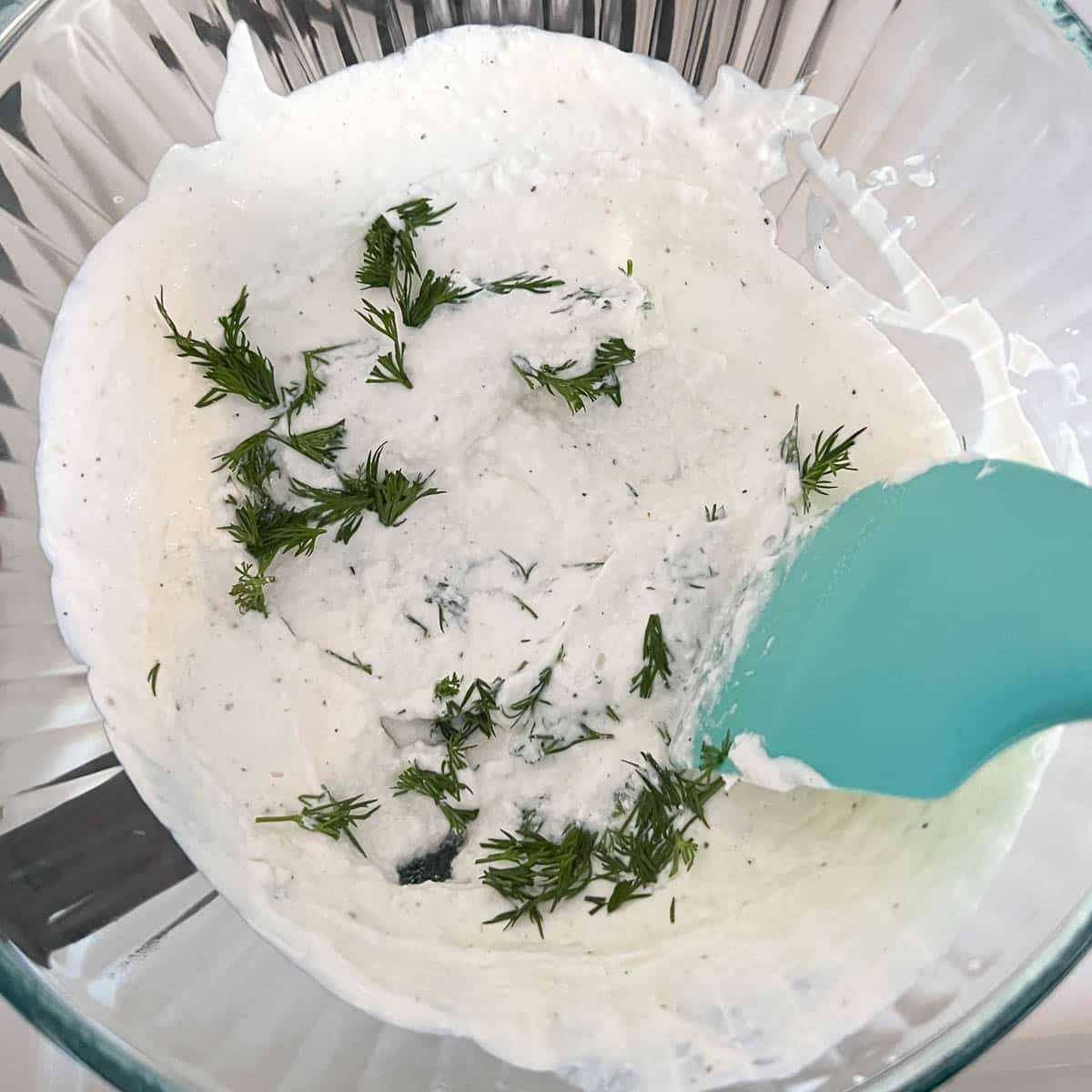
Would you like to save this recipe?
Step 2: Crack one egg into a fine mesh strainer and gently rotate in a circular motion for about 20 seconds, allowing the outer albumen (the runniest part of the egg white) to drip into a small dish or ramekin.
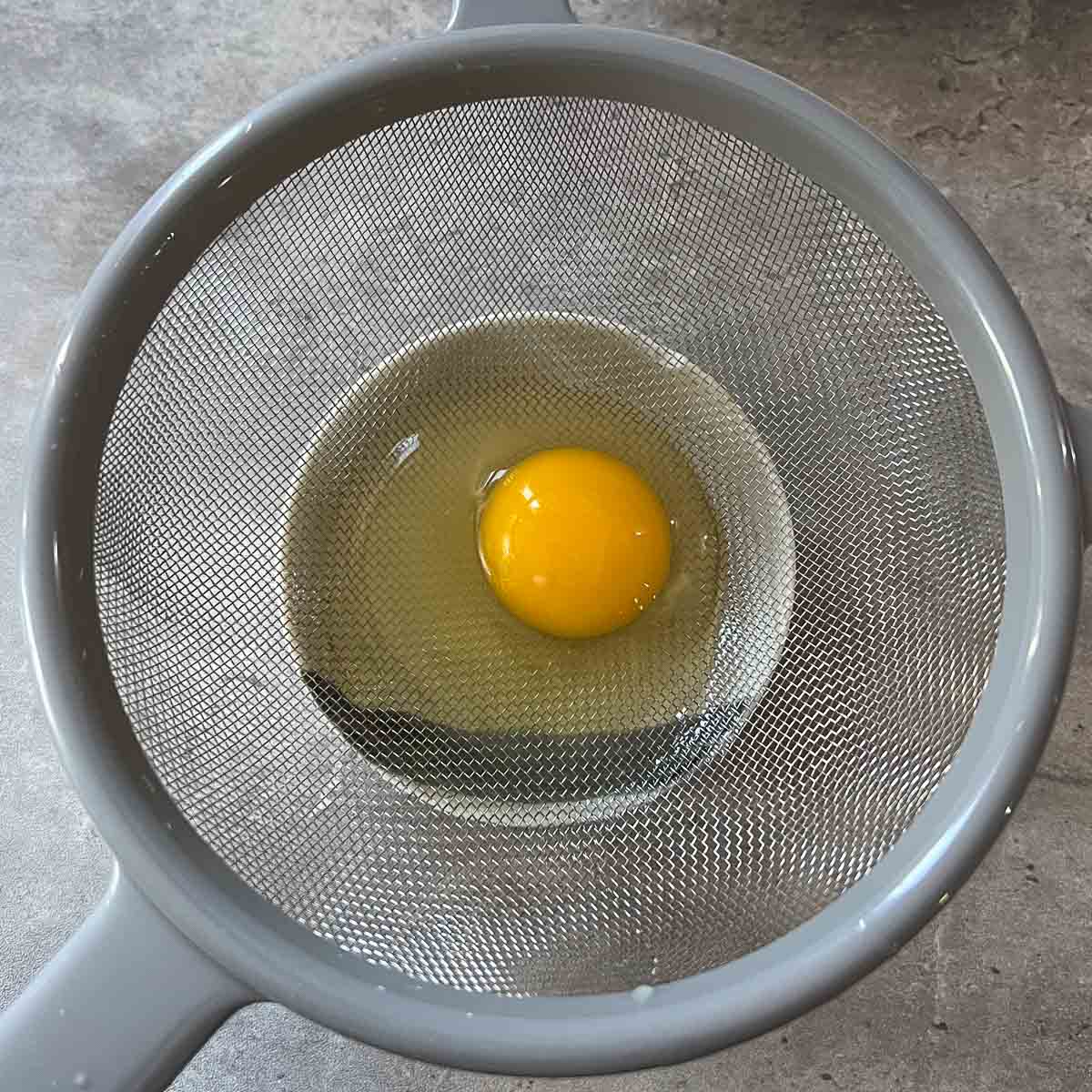
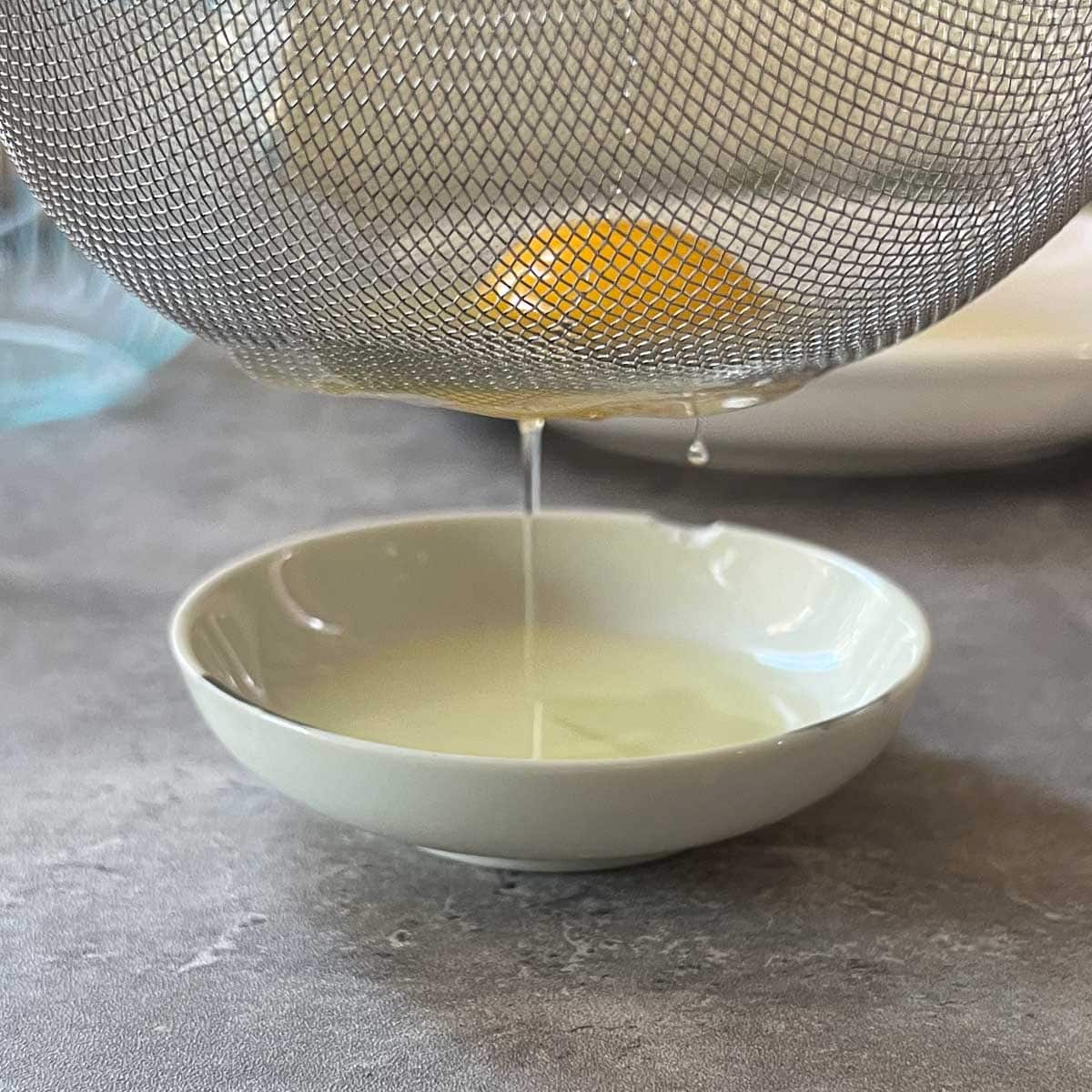
Step 3: Reduce the heat on the remaining pot of water to low and allow it a few minutes to settle. The water should be roughly 180°F, barely bubbling. Once the excess egg white has drained, carefully transfer the egg into a ladle. Give the water a gentle swirl with a spoon before lowering the ladle into the water, keeping it there for about 10-20 seconds or until the outside of the egg white has begun to solidify ever so slightly.
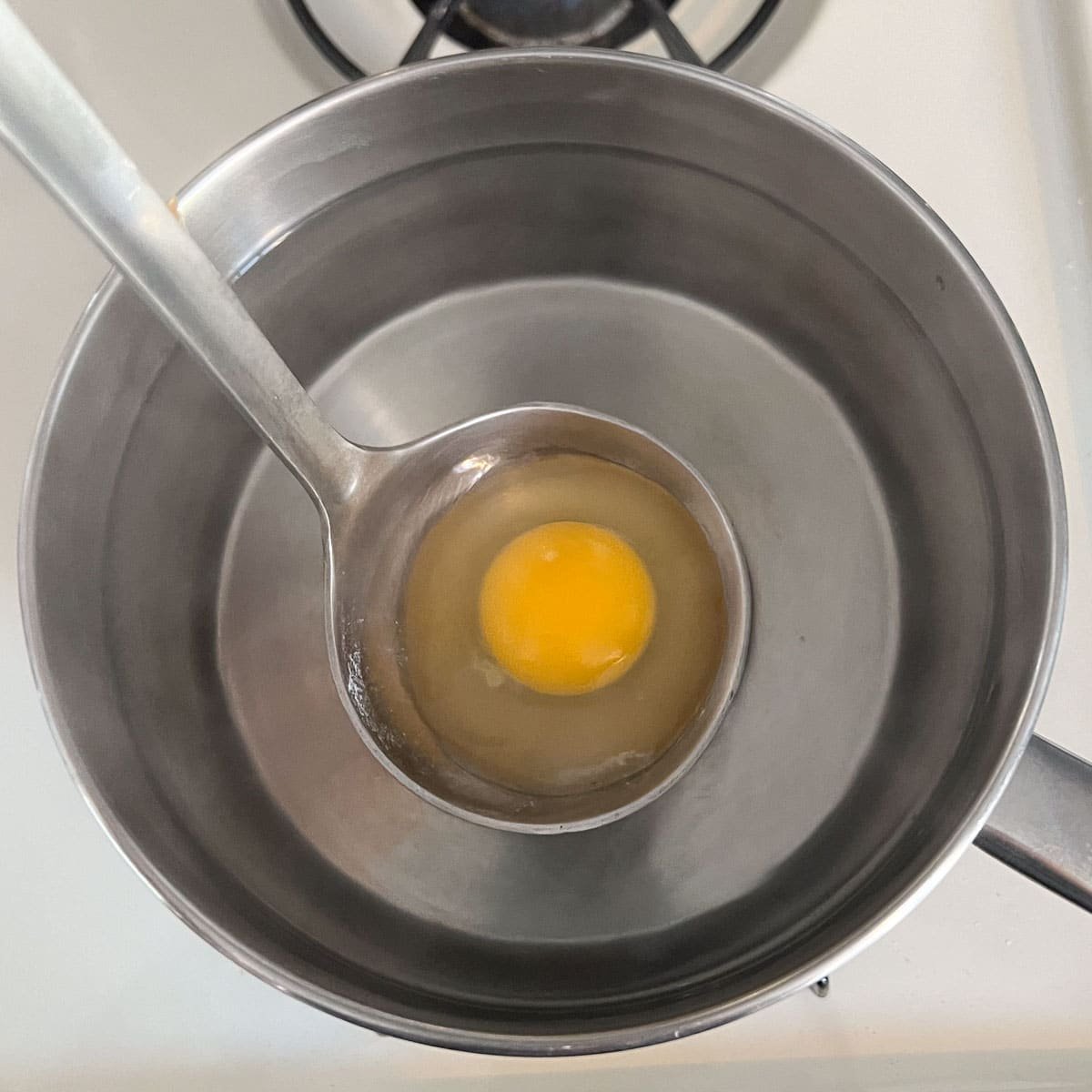
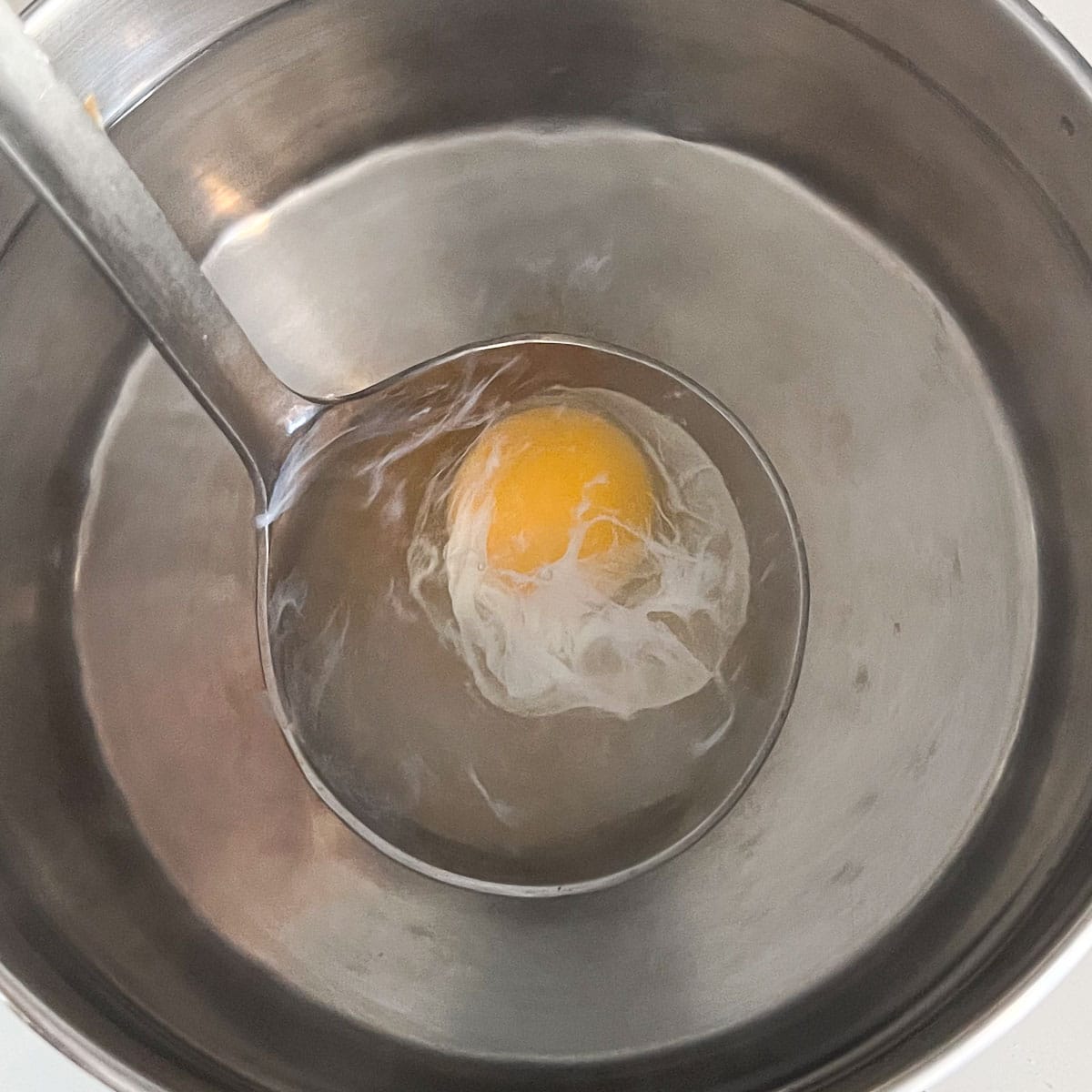
Step 4: Carefully remove the ladle, then allow the egg to cook for roughly 2 ½ minutes. Use the ladle or a slotted spoon to gently remove the egg from the pot, then set aside on a paper towel to dry and repeat steps 2-4 with the other egg.
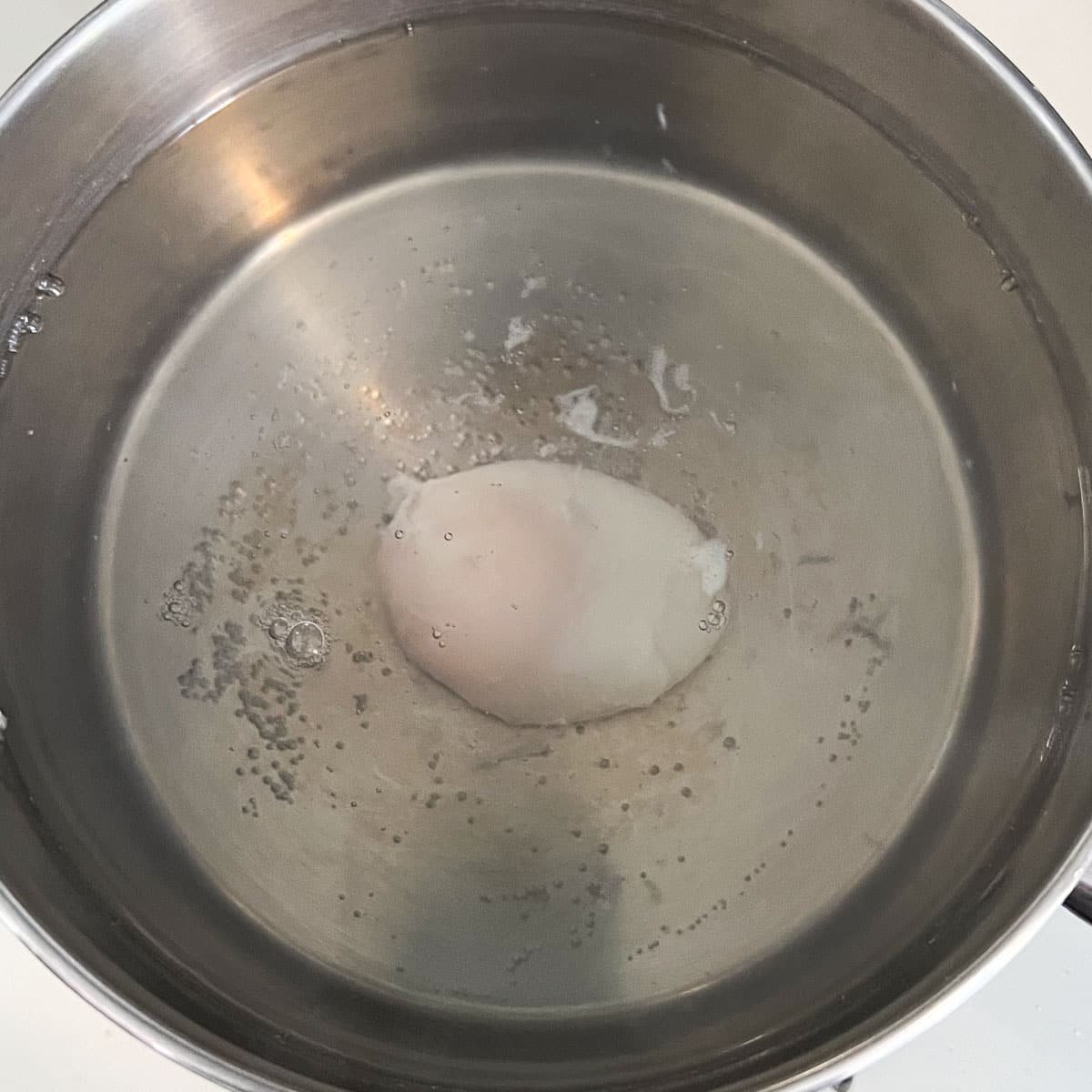
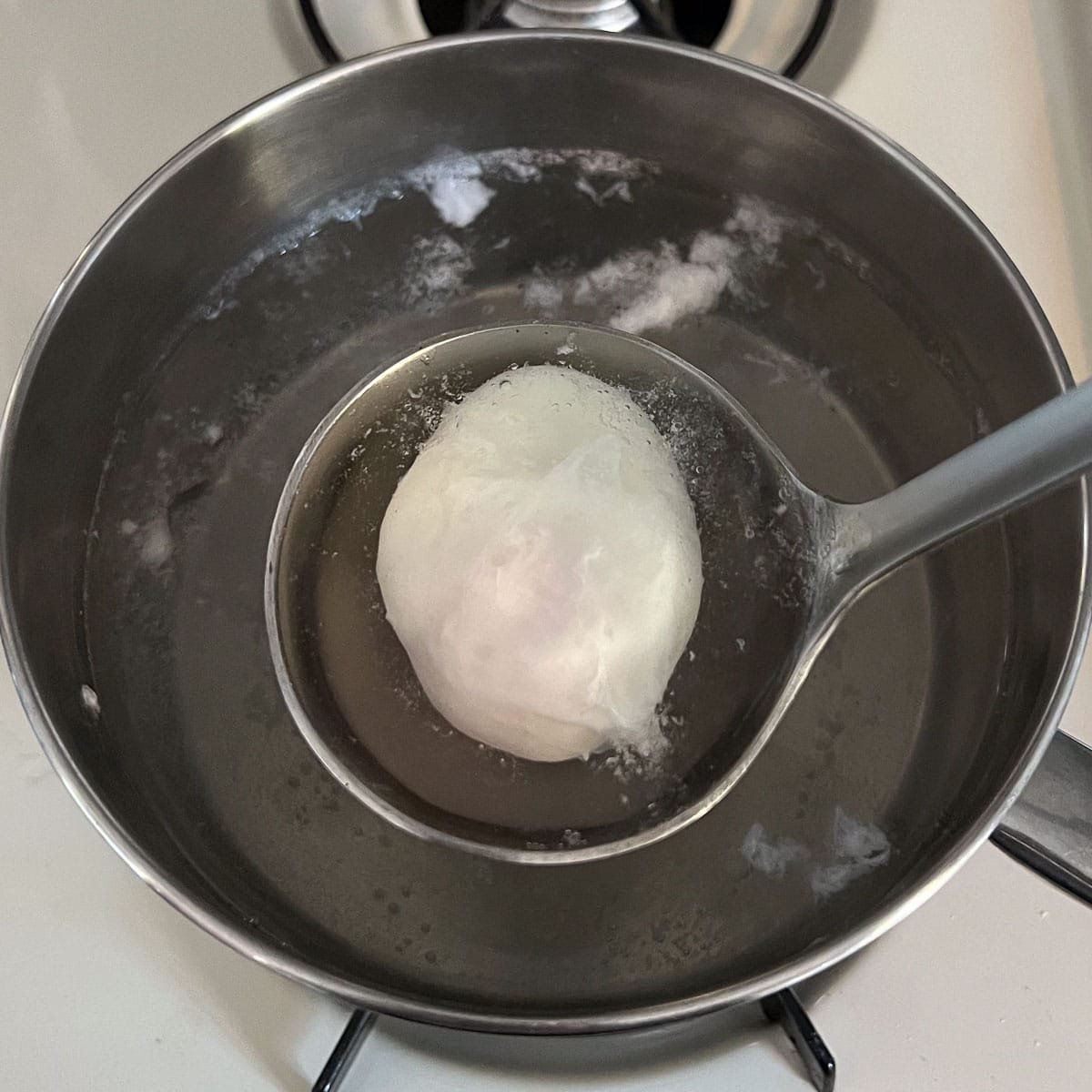
Pro Tip: You can poach both eggs at the same time if you feel confident enough. I chose to cook them separately so I could confirm the first one was cooked properly before cooking the other.
Step 5: In a small saucepan, melt butter over low heat. Once completely melted, remove from heat and mix in harissa so it does not burn.

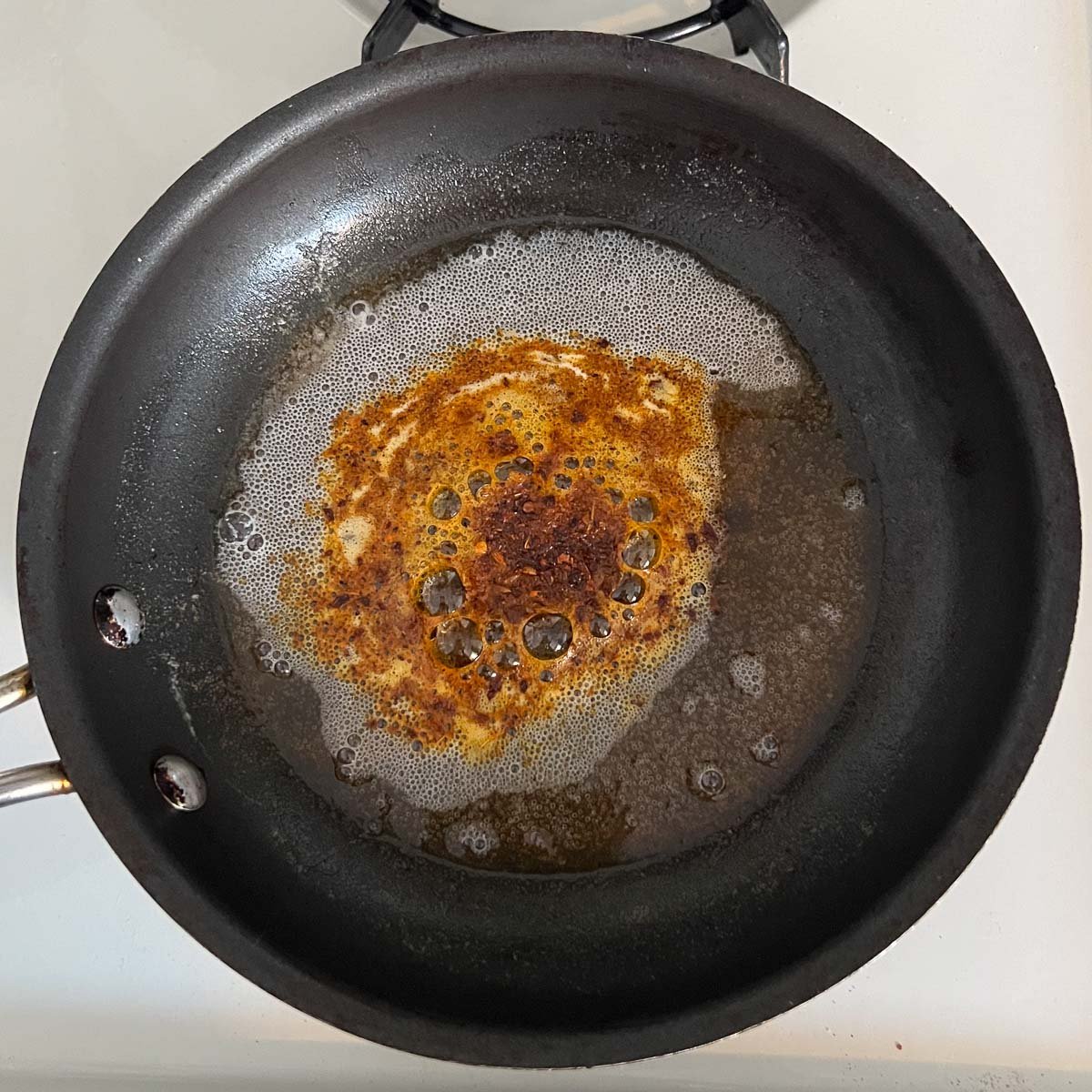
Step 6: Pour yogurt mixture into the bottom of a bowl, then top with a swirl of melted butter mixture before carefully arranging the eggs on top. Finish off with more dill, freshly chopped basil, a pinch of harissa, a squeeze of lemon juice, and a little bit of lemon zest.

🤷🏻♀️ Recipe FAQs
While shakshuka and Turkish eggs (aka "Çılbır") are both poached egg dishes, there are some key distinctions. Traditionally, Turkish eggs are served over Greek yogurt with fresh herbs and spicy butter, while the eggs in shakshuka are cooked in a spicy pepper and tomato sauce mixture.
Turkish eggs (cilbir), which are poached, are often confused with another Turkish breakfast dish called "menemen." Menemen consists of scrambled eggs in a tomato sauce and is more similar to shakshuka.
"çılbır" is the name of a Turkish egg recipe, rather than a word with a direct meaning.
👩🏻🍳 Pro Tips
- If you don't like your eggs super runny, you can cook them an additional 30 seconds or so to achieve a more jam-like texture.
- No law says you can't crumble a little bacon into your cilbir! Pink pickled onions would also make an excellent addition.
- This Turkish eggs recipe is usually eaten warm, but it's still great at room temperature or even cold!
- Unless you intend to eat them cold, I would not recommend making Cilbir ahead of time. Warming up this dish without overcooking the eggs could be tricky.
- You may have a bit of the harissa-infused butter left over. Save it for dinner, then reheat and drizzle over roasted vegetables!
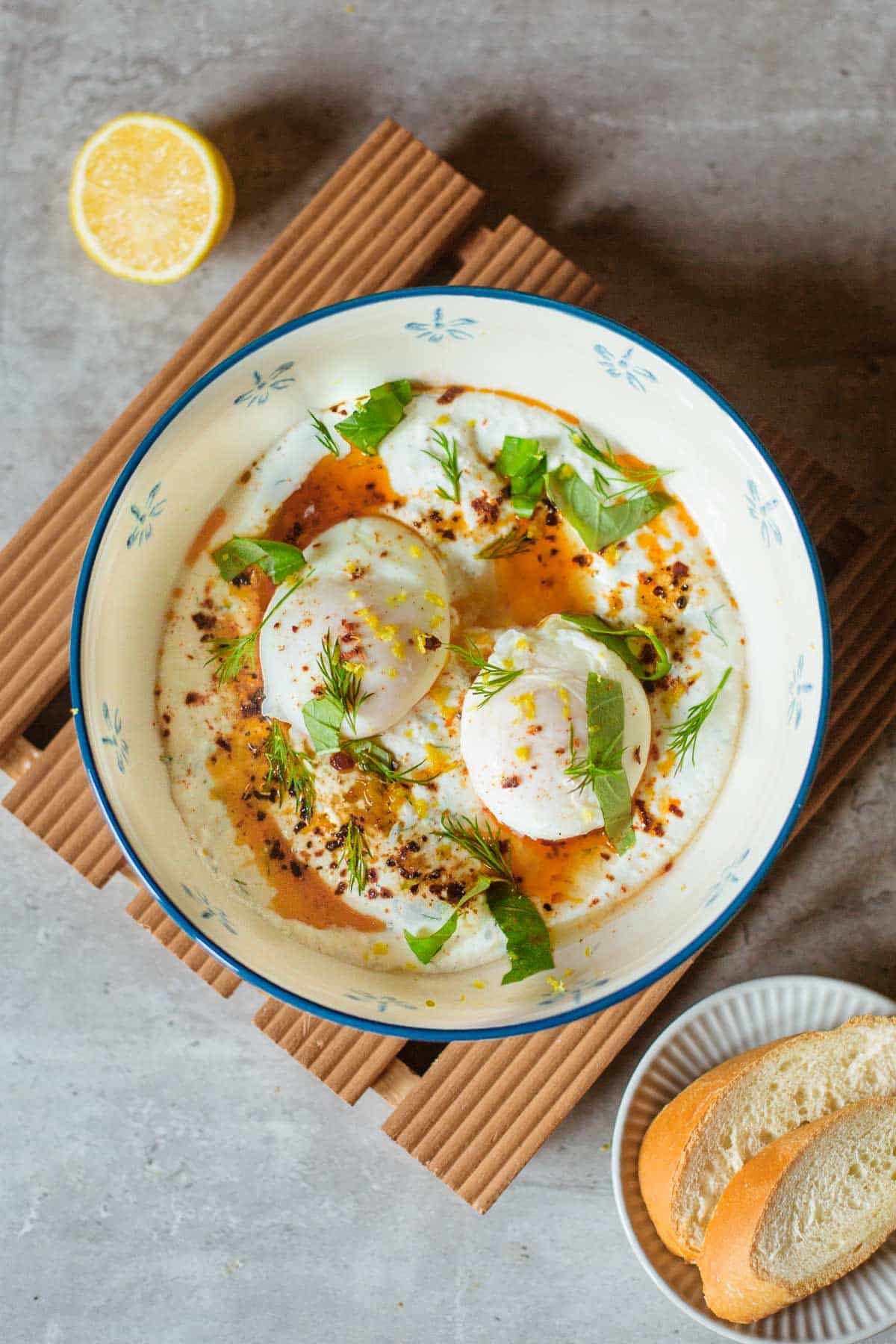
🍽 More Turkish Recipes
If you enjoyed this Turkish eggs recipe (Cilbir), check out these other Turkish dishes!
📖 Recipe
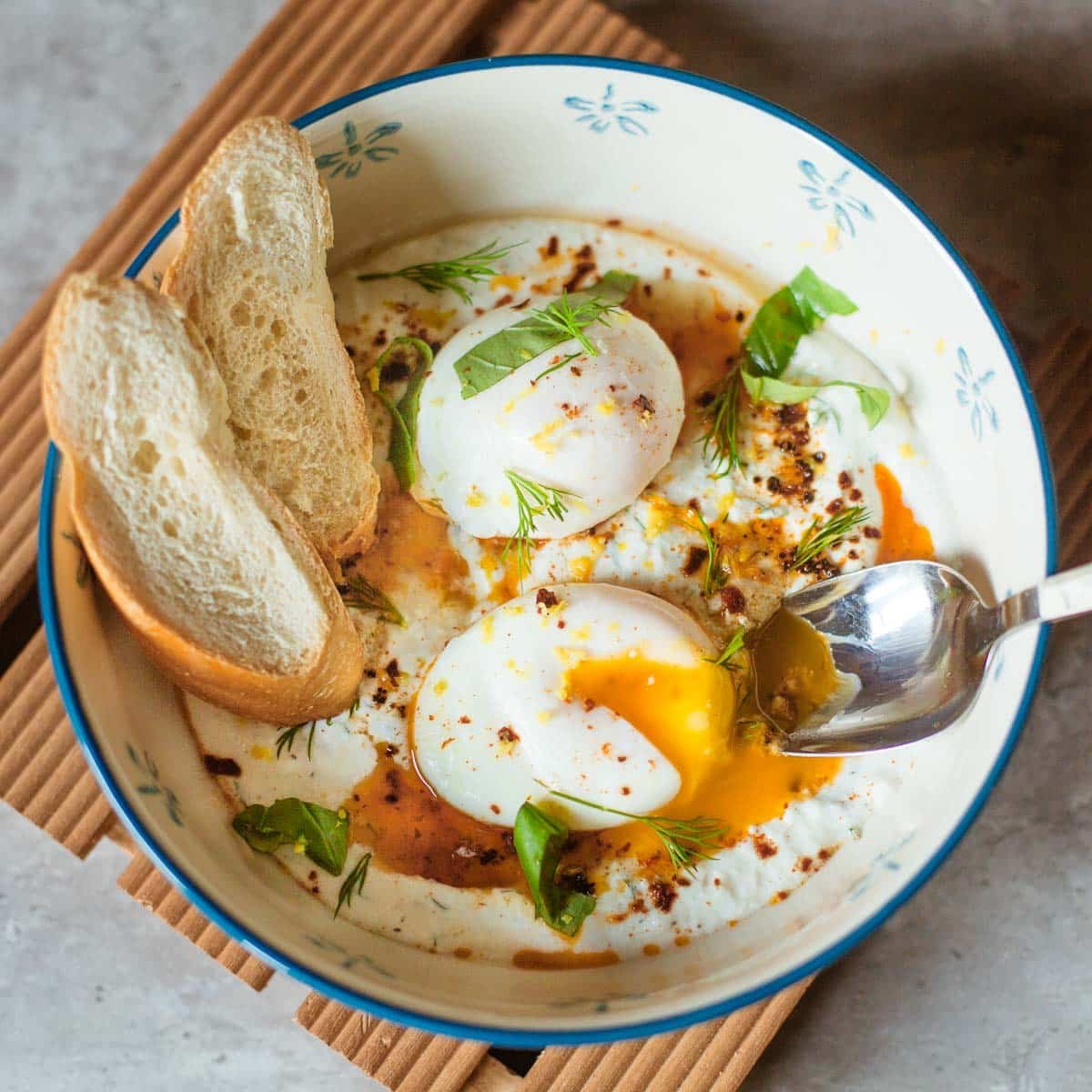
Poached Turkish Eggs Recipe (Cilbir)
Ingredients
Equipment
Method
- Start by bringing two small pots of water to a boil, one for the eggs, and one for the yogurt. In a medium-sized bowl, combine Greek yogurt, sea salt, black pepper, and freshly minced garlic. Place over one of the pots of water, bringing it down to very low heat. As the yogurt begins to soften, stir occasionally until consistent. Once yogurt is warm, stir in freshly chopped dill and remove from heat.
- Crack one egg into a fine mesh strainer and gently rotate in a circular motion for about 20 seconds, allowing the outer albumen (the runniest part of the egg white) to drip into a small dish or ramekin.
- Reduce the heat on the remaining pot of water to low and allow it a few minutes to settle. The water should be roughly 180° F, barely bubbling. Once the excess egg white has drained, carefully transfer the egg into a ladle. Give the water a gentle swirl with a spoon before lowering the ladle into the water, keeping it there for about 10-20 seconds or until outside of egg white has begun to solidify ever so slightly.
- Carefully remove the ladle, then allow the egg to cook for roughly 2 ½ minutes. Use the ladle or a slotted spoon to gently remove the egg from the pot, then set aside on a paper towel to dry and repeat steps 2-4 with other egg.
- In a small saucepan, melt butter over low heat. Once completely melted, remove from heat and mix in harissa so it does not burn.
- Pour yogurt mixture into the bottom of a bowl, then top with a swirl of melted butter mixture before carefully arranging the eggs on top. Finish off with more dill, freshly chopped basil, a pinch of harissa, a squeeze of lemon juice, and a little bit of lemon zest.
Nutrition
Notes
-
- You can poach both eggs at the same time if you feel confident enough. I chose to cook them separately so I could confirm the first one was cooked properly before cooking the other.
- If you don't like your eggs super runny, you can cook them an additional 30 seconds or so to achieve a more jam-like texture.
- There's no law that says you can't crumble a little bacon into your cilbir! Pink pickled onions would also make an excellent addition.
- This Turkish eggs recipe is usually eaten warm, but it's still great around room temperature or even cold!
- Unless you intend to eat them cold, I would not recommend making Turkish eggs ahead of time. Warming up this dish without overcooking the eggs could be tricky.
- You may have a bit of the harissa-infused butter left over. Save it for dinner, then reheat and drizzle over roasted vegetables!

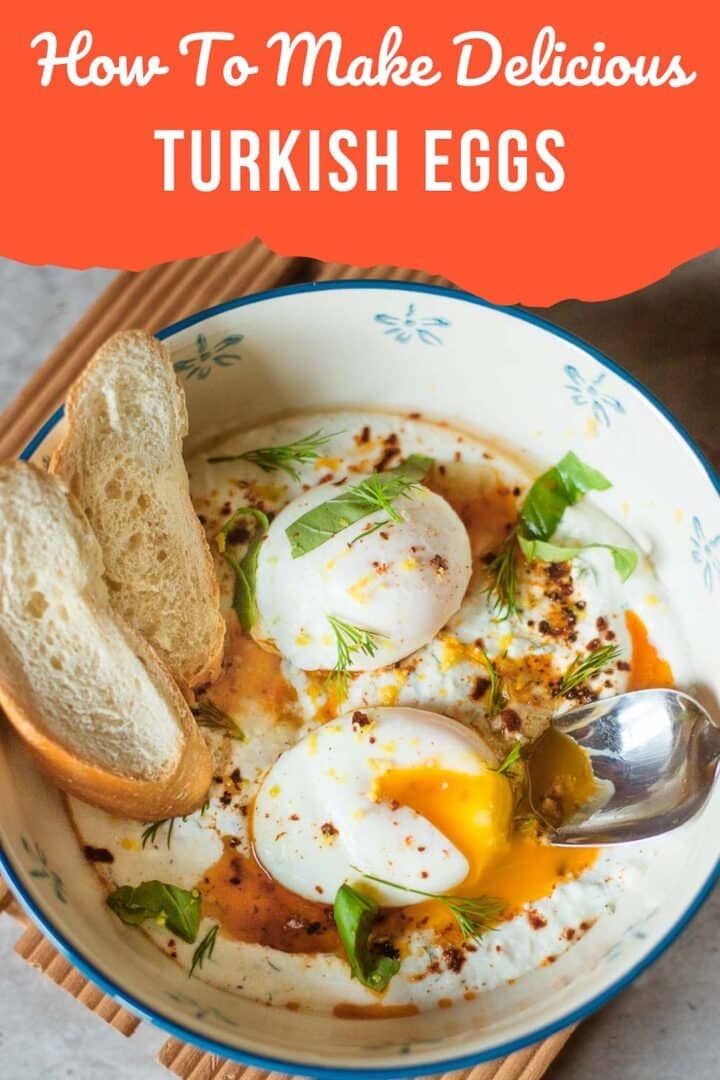




Comments
No Comments